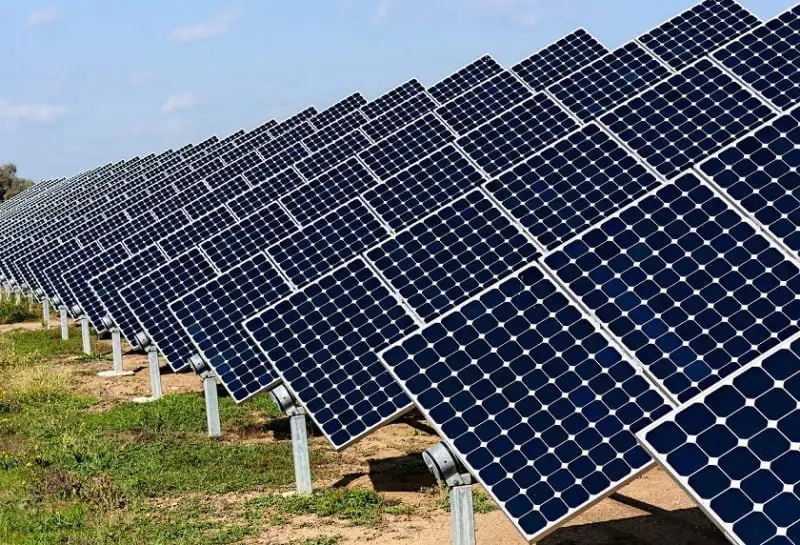1 MW Solar Systems Price In India
In today's fast-paced world, energy demand continues to rise, as does the demand for environmentally friendly and renewable energy sources. Solar power has emerged as one of the most promising solutions for meeting rising energy demand while reducing our carbon footprint. Because of its large ability to create clean electricity, one megawatt (MW) solar systems have received a lot of attention. This article goes into the concept, benefits, and pricing of 1 MW solar systems, paving the way for a more environmentally friendly and sustainable future.

What is a 1 MW Solar System?
A 1 MW solar system, as the name suggests, has a power generation capacity of one megawatt, equivalent to one million watts. It comprises multiple solar panels interconnected to produce electricity. These solar panels harness sunlight and convert it into direct current (DC) electricity, which is then converted into alternating current (AC) through inverters for practical use in homes, businesses, or industries.
How Do 1 MW Solar Systems Work?
1 MW solar systems work on the principle of the photovoltaic effect. Solar panels consist of photovoltaic cells made of semiconductor materials like silicon. When sunlight strikes these cells, electrons are released, creating an electric current. This process continues as long as sunlight is available, allowing a continuous generation of electricity.
Advantages of Implementing a 1 MW Solar System
Reduced Carbon Emissions
One of the most significant advantages of 1 MW solar systems is their contribution to reducing greenhouse gas emissions. By generating clean energy from the sun, these systems help mitigate the harmful effects of burning fossil fuels, making them an environmentally-friendly alternative.
1MW Solar Plant Price 2023
|
Particulars |
Estimated Cost |
|
3 Cr. |
|
|
1 Cr. |
|
|
Combiners + Junction Boxes |
20 Lakh |
|
Protective Gears Arrangement |
10 Lakh |
|
SCADA & Data Logger System |
7 Lakh |
|
Land Bank |
*5 Acre |
|
Erection of Project |
50 Lakh |
|
Total Project Cost |
4.87 Cr. (Approx.) |
Cost Savings
Though the initial investment in a 1 MW solar system may seem substantial, it offers long-term cost savings. As solar energy is harnessed for free, it significantly reduces electricity bills over time, leading to a positive return on investment.
Energy Independence

Relying on solar power promotes energy independence, especially for commercial and industrial establishments. By producing their electricity, businesses can mitigate the impact of fluctuating energy prices and achieve greater stability in their operations.
Factors Affecting the Price of 1 MW Solar Systems
The cost of installing a 1 MW solar system can vary based on several factors:
Solar Panel Quality and Efficiency
High-quality and efficient solar panels might cost more initially, but they ensure better performance and durability, ultimately leading to higher energy production.
Inverter Technology
The type of inverters used in the system can impact its overall efficiency. Advanced and reliable inverters may come with a higher price tag but yield better results in the long run.
Mounting System
The mounting system plays a crucial role in keeping the solar panels secure and optimally angled for maximum sunlight exposure. A sturdy and efficient mounting system is essential for optimal performance.
Location and Site Preparation
The location and site preparation can affect installation costs. A site with easy access and good sun exposure will require less preparation, while challenging terrains may add to the expenses.
Government Incentives
Government incentives, tax credits, and rebates can significantly reduce the upfront cost of installing a 1 MW solar system, making it a more affordable investment.
Comparing Installation Costs
The installation costs for 1 MW solar systems can differ between residential and commercial setups. Commercial installations often benefit from economies of scale, leading to a lower cost per watt compared to residential installations.
Return on Investment (ROI) for 1 MW Solar Systems
The ROI for a 1 MW solar system depends on various factors, including installation costs, energy savings, maintenance expenses, and government incentives. In most cases, businesses and industries can expect a positive ROI within a few years of installation.
Maintenance and Longevity of 1 MW Solar Systems
Proper maintenance is essential to ensure the optimal performance and longevity of 1 MW solar systems. Regular cleaning, inspection, and addressing minor issues promptly can extend the lifespan of the system, typically lasting 25 to 30 years or more.
The Future of 1 MW Solar Systems
As technology advances and solar energy becomes more mainstream, the future of 1 MW solar systems looks promising. Continued research and development will likely lead to even more efficient and cost-effective solar solutions.
How to Choose the Right Solar Provider
Selecting the right solar provider is crucial to ensure a successful installation. Look for reputable companies with experience in large-scale solar projects, positive customer reviews, and a strong commitment to quality.
Top Brands in the 1 MW Solar System Market
Several renowned brands have made a name for themselves in the 1 MW solar system market. Some of the top players include industry pioneers known for their reliable and high-performance solar products.
Case Studies of Successful 1 MW Solar Installations
Examining real-life case studies of successful 1 MW solar installations can provide valuable insights into the benefits and challenges associated with such projects.
Common Misconceptions about 1 MW Solar Systems
Addressing common misconceptions about 1 MW solar systems can help dispel myths and encourage broader adoption of this clean energy solution.
Environmental Impact and Sustainability
Understanding the positive environmental impact and long-term sustainability of 1 MW solar systems can foster a sense of responsibility and urgency in embracing renewable energy sources.
Challenges in Implementing 1 MW Solar Systems
Despite their numerous advantages, 1 MW solar systems face challenges, including land availability, regulatory hurdles, and upfront costs. Addressing these challenges is crucial to promoting widespread adoption.
